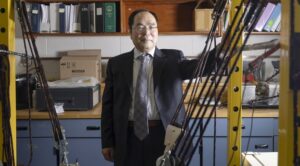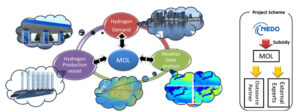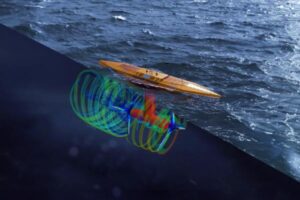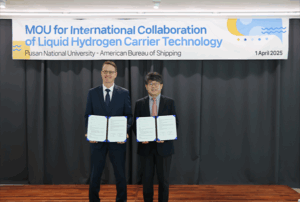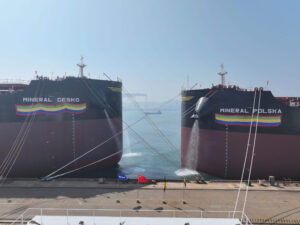Professor of Geochemistry Miriam Kastner Receives Francis Shepard Medal from SEPM (USA)
Scripps Institution of Oceanography, UC San Diego Professor of Geochemistry Miriam Kastner, a pioneer in the study of the chemistry of marine sediments, received the Francis Shepard Medal from the Society for Sedimentary Geology (SEPM).
Kastner’s research has taken her around the world to study sub-seafloor deposits, how sediments form and the process called diagenesis in which sedimentary deposits become rock.
“I am honored and humbled to be in the company of many outstanding scientists who have been awarded the prestigious Francis Shepard Medal before me,” said Kastner. “The most touching and moving thought I had when I received the notice that I was selected to receive the medal was that some of my colleagues thought that I am worthy of this medal and were willing to spend their busy time to nominate me.”
According to the society’s citation, Kastner was selected “In recognition of the geological and geochemical expertise she has employed in greatly enlarging our understanding of sediment deposition and diagenesis as well as fluid flow through sub-seafloor sediments and rocks, along with continuous high-level service to the marine geological community.”
Kastner became the first female professor in Scripps history when she joined the institution’s faculty in 1972 as an assistant professor of geology. Prior to that she had received a doctorate in geology from Harvard University in 1970. She was appointed full professor at Scripps in 1982 and is also the first female distinguished professor in Scripps history.
The SEPM award is named for Francis Shepard, a Scripps marine geologist noted for his work on submarine canyons. Shepard died in 1985.
“Close to the completion of my Ph.D. degree at Harvard University, the possibility of getting a prime job in academia looked rather bleak for graduates of my gender,” said Kastner. “Unexpectedly, I was fortunate to be the first woman to be invited to join the renowned faculty of Scripps, where I briefly met Francis Shepard, and this had a profound influence on my career. This position provided me with extraordinary possibilities to engage in new research with state-of-the-art facilities and great seagoing opportunities.”
In addition to the Shepard Medal, Kastner received this year the Scripps Undergraduate Instructor Teaching Excellence Award. She has authored or co-authored more than 170 research articles and has participated in numerous research cruises, including 13 ocean drilling cruises.
Kastner is a Fellow of the American Association for the Advancement of Science, the American Geophysical Union, the Geochemical Society, and the International Association of Geochemistry and Cosmochemistry, and a member of the Society of Sigma Xi. She has served on many national and international advisory committees.
Beginning in 2002, Kastner was appointed to a three-year term on the National Research Council’s Ocean Studies Board. She has been a panel member of the National Science Foundation’s (NSF) Division of Earth Sciences and a member of NSF’s Advisory Committee for Earth Sciences. She was a member of the Ocean Drilling Project’s Planning Committee and Section E-Geology and Geography of the American Association for the Advancement of Science.
“It is wonderful to see Miriam win this award named after an illustrious Scripps scholar,” said Scripps Deputy Director of Research Cathy Constable. “She is a pioneer in many areas and an outstanding example for the rest of us.”
The society presented Kastner with the medal at its 2011 President’s Reception and Awards Ceremony during the SEPM Annual Meeting held in Houston in April.
[mappress]
Source: Scripps Institution of Oceanography, May 24, 2011

